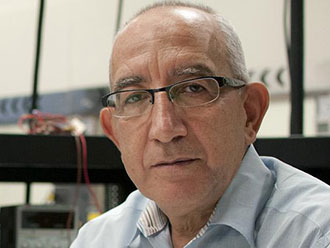Mechanical and aerospace engineering Professor Ashfaq Adnan is working with the Office of Naval Research on four projects totaling over 4 million dollars to examine how head trauma damages the brain and to build better protection to prevent it in the future.
In the first study, he is using ultra-high-speed cameras to capture and analyze the effects of rapid acceleration/deceleration and other dynamic events within a simulated brain. Previous research suggests that rapid back-and-forth head motion has great potential to create cavitation, or bubbles, that can damage brain cells as well as neuron cell injury.
In the second study, his team will study how neuronal structural damage affects neuronal communication. This work is part of a multi-institutional research grant called PANTHER; Dr. Adnan is the only investigator representing UTA and the state of Texas.
“These two studies will give us the unique opportunity to understand cellular-level brain injury mechanisms and neuronal communication,” Adnan says. “Once we understand the pathways leading to brain injury, we will have more avenues to explore damage mechanisms and apply our findings to prevention and treatment of brain injury.”
In the third study, Adnan’s group is studying advanced sensor technologies that can be embedded on protective “smart” helmets to sense head and brain injuries and allow soldiers to more rapidly receive medical treatment. “Our sensors will be able to track head motion and brain health in real time,” Adnan explains.
In the fourth study, he will use a 2021 Department of Navy’s Distinguished Fellow Program award to study 3D-printing technology for building new types of materials for helmets. Adnan is one of the only six recipients nationwide to receive this prestigious, $1.5 million award. His team will design and 3D print advanced multi-layer cellular materials that are strong enough to be more effective against impact by absorbing as much energy as possible. Since directed energy always travels in waves, the helmet will include a layer of materials designed to deflect those waves and mitigate their strength, much like stealth technology on aircraft.
“We will build the life-sized helmets and embed the sensors we are developing from the other studies,” Adnan says. “Our research will focus on the interface between the helmet and the brain and how to use smart sensing to recognize brain trauma. We are hoping not only to prevent brain injuries, but to be able to promptly detect situations in which a brain injury may have occurred.”



